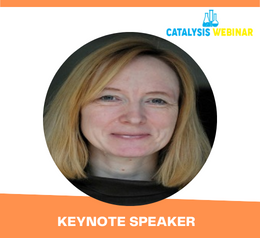Scholars International Webinar on
Catalysis, Chemical Engineering & Technology
THEME: "Contemporary Advances and Innovations in Catalysis and Chemical Engineering Research"
 25-26 Nov 2021
25-26 Nov 2021  Online | Virtual
Online | Virtual THEME: "Contemporary Advances and Innovations in Catalysis and Chemical Engineering Research"
 25-26 Nov 2021
25-26 Nov 2021  Online | Virtual
Online | Virtual 
Leibniz Universität Hannover, Germany
Title: How chemistry leads to deterministic quantum mechanics
Irmgard Frank studied chemistry at the LMU Munich
(1988 – 1993). She went to the University of Bonn where she completed her PhD
thesis in 1995. She became a postdoc at the Max-Planck institute for solid
state science in Stuttgart where she developed the restricted-open shell
Kohn-Sham method (ROKS) for the simulation of photoreactions. She went back to
Munich and completed her Habilitation in 2004. Her work focused on the
ab-initio simulation of chemical reactions. In 2008 she was appointed associate
professor at the University of Hannover. More recently, she develops
deterministic quantum mechanics.
The simulation of chemical reactions is the holy grail
of quantum chemistry. In the end one wants to see movies that show the nuclear
motion. In addition, it is nice to see the motion of the electronic cloud
accompanying and explaining this nuclear motion. Of course, we follow the
Rutherford picture of very small nuclei (femtometer scale) within an atom
(picometer scale). We lose no accuracy if we describe the nuclei as classical
point charges. As it turns out, we have indeed no alternative to this picture,
if we describe the electronic cloud with the Schrödinger equation.
Consistently, we can move the nuclei with classical Newton dynamics. This
approach is already implemented as ab-initio molecular dynamics –
unfortunately: we arrive at nothing new, trial and error already led
there; fortunately: we can immediately
test this approach. It turns out that this deterministic version of quantum
mechanics describes reactions, including photo reactions, just perfectly. A vibrational
zero-point energy is not needed, the electronic zero-point energy is more than
enough. From comparison to experiment at
normal energies, we get no hint how to improve this theory of classical nuclear
motion. It works fine at normal energies. Classical nuclear motion has
philosophical implications: Schrödingers cat dies deterministicly. Note that
our approach is not identical with Bohm mechanics. Instead of a guidance
equation we simply have Newtons equation.